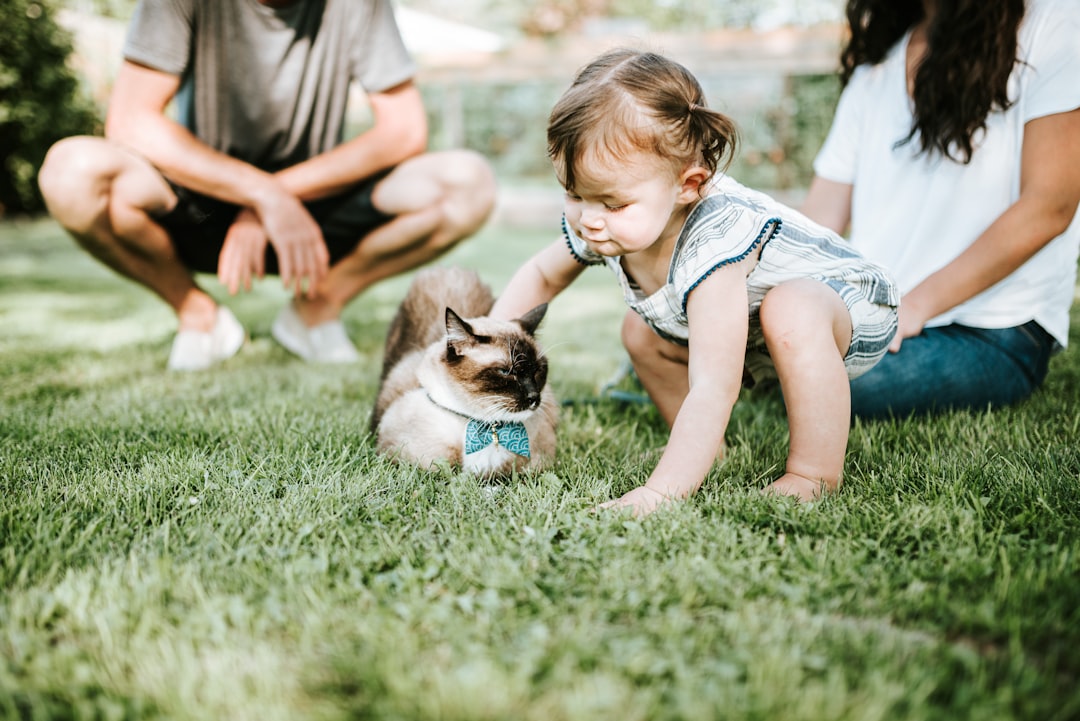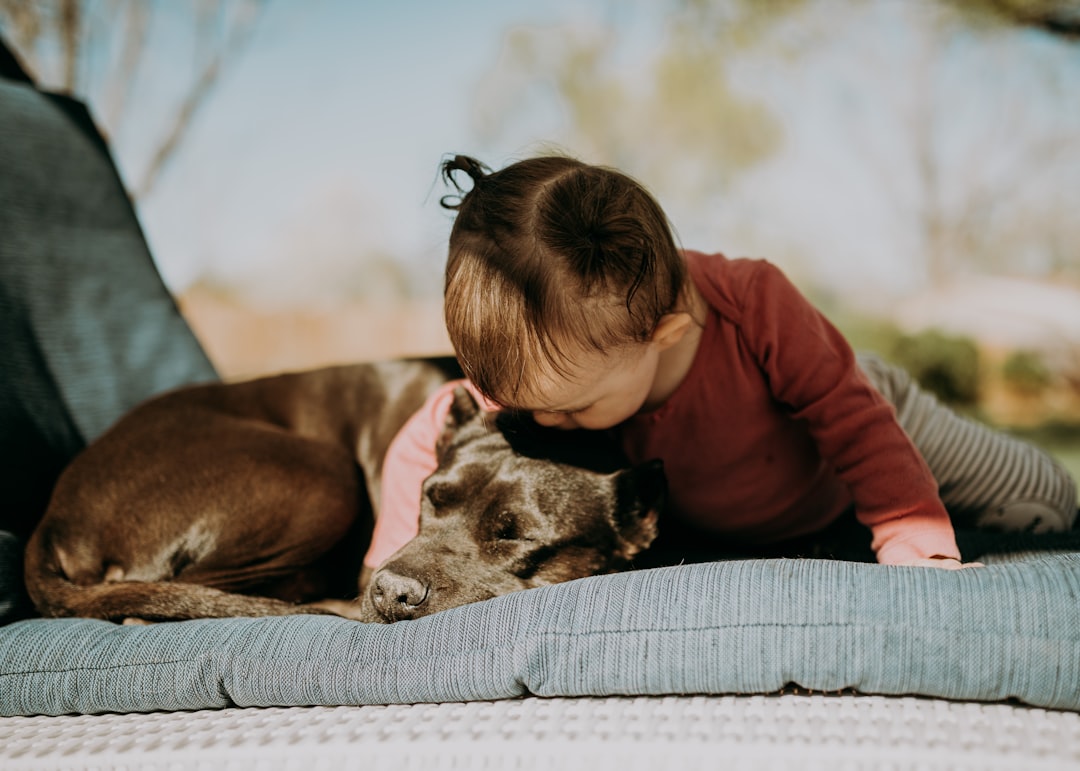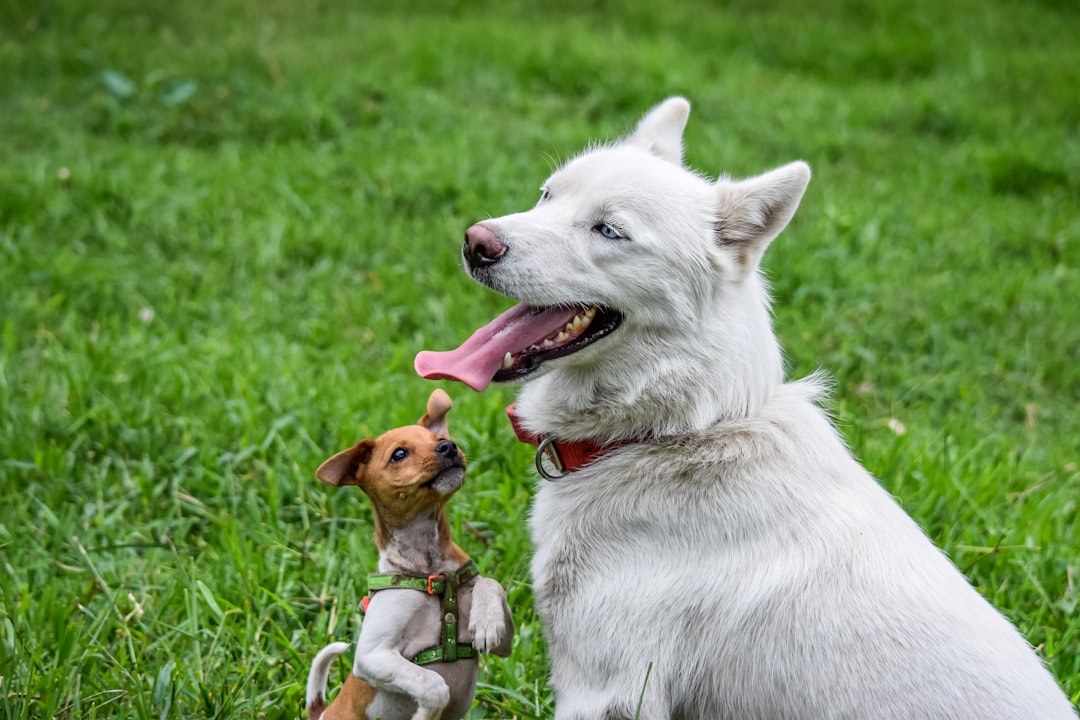

Engage prospects with a scan and streamline customer engagement with FREE QR code marketing tools by Sona – no strings attached!
Create a Free QR CodeFree consultation

No commitment

Engage prospects with a scan and streamline customer engagement with FREE QR code marketing tools by Sona – no strings attached!
Create a Free QR CodeFree consultation

No commitment
QR codes have become an essential bridge between offline engagement and online action, especially for pet adoption services seeking to connect with prospective adopters more efficiently. Instead of requiring app downloads or navigating through complex sign-up forms, QR codes allow organizations to deliver vital information, resources, and instant support at each touchpoint. When a visitor stops in front of a kennel card, sees a flyer at a café, or attends an adoption event, a scan can open a complete pet profile, log interest in your CRM, and invite the person to book a meet-and-greet.
The pet adoption process often loses high-value prospects due to the difficulty of capturing early interest or tracking intent through paper forms or in-person interactions. By integrating QR codes across marketing assets and adoption events, shelters can streamline appointment scheduling, showcase real-time pet profiles, and collect adoption signals, ensuring timely follow-up and fewer missed opportunities. QR-enabled forms replace illegible paper sign-in sheets, while dynamic codes keep every profile and resource up to date without reprinting.
QR code tracking connects every touchpoint to actionable data, helping organizations accelerate lead capture and attribute success to specific outreach efforts. The following sections detail how animal shelters and marketing teams can use QR code technology to drive conversions, eliminate offline blind spots, and maximize their impact in the adoption community. With platforms like Sona QR, teams can deploy, manage, and measure QR experiences at scale to turn every print and in-person interaction into a measurable step toward adoption.

QR codes offer a targeted solution for the widespread challenge of missing out on qualified leads from in-person interactions. Without linking physical and digital touchpoints, many potential adopters remain unnoticed. A visitor who falls in love with a dog at a mobile adoption event might leave without giving contact details; a family reading a flyer could mean to follow up later, then forget. QR codes turn these fragile moments into decisive next steps.
Step-by-step, QR code campaigns address these issues with a practical framework that any shelter can implement. Start by identifying your highest-value actions, then design QR experiences that remove friction and make those actions easy. Replace outdated analog steps where they slow people down, like paper forms, voicemail call-backs, or printed lists of available pets. With Sona QR, you can manage dynamic codes, track performance in real time, and route scans to the right forms or profile pages without engineering support.
For example, digital forms accessed via QR codes replace error-prone paper sign-in sheets, using Google Forms QR, centralizing data and letting teams act while prospects’ interest is highest. A volunteer no longer needs to decipher handwriting or manually enter emails; the moment someone scans, their details are captured, routed to the right list, and can trigger a personalized follow-up sequence within minutes to share pet information.

Pet adoption services often struggle to understand when and where interest sparks, due to anonymous or offline engagement. Standard methods miss many prospects at events or through printed materials. A beautiful poster can make someone curious but does not tell your team who that person is or how to help them take the next step.
QR codes plug that gap by turning curiosity into measurable action. Every scan can launch a fast, mobile-first experience designed to educate, persuade, and convert at the moment of intent. This not only increases adoption pipeline volume but also reduces staff workload, since fewer manual steps are needed to capture and qualify leads.
Appointment cards, signage, and mailers with dynamic QR codes can personalize every interaction and highlight what drives prospects to take action. For instance, an appointment card with a QR code can preload the adopter’s preferred pet profile and directions, while a post-adoption postcard can link to training videos tailored to the animal’s age and breed.

Pet adoption involves different engagement points, from initial inquiry to post-placement support. A single QR approach does not fit every need, so choose formats and destinations that match the action you want. The goal is not to send people to your homepage; the goal is to get them to the right next step with as few taps as possible.
Lean into formats that reduce friction for adopters, fosters, and volunteers. Sona QR’s use case library lets you generate and manage multiple types, then adjust destinations as your campaign evolves. That flexibility prevents outdated content and keeps your messaging aligned with current inventory and priorities.
Central monitoring helps organizations update information and ensure data is attributed to the correct channels. When you switch a pet profile from available to pending, the QR destination can automatically shift to similar animals or to a general interest form, keeping momentum with interested scanners.
In-person events and collateral remain underutilized when intent data is not collected digitally. Every place your story appears is a chance to turn interest into action. QR codes capture those moments, give you data, and organize follow-up so no one slips through the cracks.
Start by mapping your highest-visibility placements and the actions you want in each context. In the lobby, a code might guide visitors to an adoption application; at an event, it might handle check-in and build a segmented list of high-intent attendees. The best placements match physical behavior and attention, such as eye-level signage where people pause.

QR code applications address high staff workload and nurture long-term relationships. For adopters, a scan shortens the journey from interest to action. For teams, it organizes incoming demand and makes follow-up timely and relevant. Below are representative use cases aligned with common interactions.
Begin with the points of highest friction in your current process. If paper check-in at events creates bottlenecks, start there. If staff spend hours answering the same questions, add QR codes that link to top FAQs and care guides. Each use case can be launched quickly, then optimized using analytics.
Transform scan data into retargeting audiences for greater ROI. Each QR scan contains context that helps you understand intent: which animal they viewed, where they scanned, the time of day, and whether they proceeded to a form. When these signals flow into your CRM and ad platforms, you can tailor follow-up to match behavior and readiness. See Sona’s intent-driven retargeting playbook for tactics.
Building audience segments starts with planning distinct codes for each journey stage and channel. Someone who scans a kennel card is different from someone who scans a billboard or an event badge. Tag these scans as separate audiences, then nurture accordingly. With Sona QR, every code can carry metadata that maps to funnel stage and source for targeting and measurement.
QR codes provide cohesion and measurement across platforms and outreach. They act as connectors that capture interest from physical media and route it to digital experiences where you can educate, book, and convert. When you manage all codes centrally, you can test CTAs, update destinations, and unify reporting for channels that were previously unmeasurable.
In pet adoption services, the most common media include kennel cards, window signage, mailers, event materials, and social posts. Use QR codes to add a fast track to action in each place. For instance, a QR code on an Instagram Story highlight can drive to a specific pet’s profile, while a postcard to lapsed adopters can link to a volunteer orientation calendar.
QR codes serve as the offline onramp to your digital marketing engine. They also unlock a new layer of data collection across channels that were once difficult to measure. With a centralized platform like Sona QR, you can manage all your codes, monitor performance, and sync scan data with your CRM and ad platforms for closed-loop reporting.
A clearly defined execution plan ensures your QR deployment drives the right actions and produces clean data for optimization. Use the steps below as a repeatable checklist you can apply to each new campaign: from a weekend adoption pop-up to a quarterly direct mail push.
Each step focuses on a single decision area, supported by practical tips and quick tests. Keep your first iteration simple, then improve with real-time analytics as you learn what attracts the most qualified adopters.
Get clear on which activities drive real results with reliable attribution and fast action. Tracking does not stop at the scan; it links the scan to meaningful outcomes like appointments, applications, and successful adoptions. When your team understands which codes, placements, and messages move people through the funnel, you can invest in what works and eliminate what does not.
Modern adoption programs need a complete view of the journey to improve conversion rates and staff efficiency. A QR code can capture the moment someone is most excited, then your analytics stack must connect that moment to the next steps. With Sona QR and Sona, an AI-powered marketing platform that turns first-party data into revenue through automated attribution and activation, you can move from engagement to insight, and from insight to action, without manual data wrangling.
The result is a feedback loop that improves over time. Each new campaign learns from the last, so you reach more people when and where they are ready, put your staff on the highest potential leads, and reduce time-to-adoption by removing uncertainty about what works.
Segmentation and prompt engagement separate winning campaigns from mediocre ones. A code on a poster will not perform if the call to action is vague or the landing page is off-topic. The most effective deployments pair clear value propositions with simple mobile flows and automated follow-ups so interest never cools.
Choose the tactics that match your most common media and workflows. For shelters, those often include signage, event materials, and direct mail. For rescues, mobile adoption vans, partner retailers, and social media integrations can be particularly fruitful. Start small, measure rigorously, and scale what consistently drives applications and successful placements.
Creative deployment examples can spark additional impact. Place a QR sticker on temporary fosters’ care folders to open 24 by 7 behavior tips, or include a QR on veterinary partner invoices that invites new pet parents to register for a training workshop hosted at your shelter.

See how real organizations execute successful QR code initiatives to reduce friction and increase conversions. The best examples use codes as entry points to thoughtfully designed experiences that educate, reassure, and prompt action at the right moment. Consider these patterns as templates to adapt to your brand and audience.
Begin with your most frequently asked questions and your highest impact moments. Anywhere staff repeats an explanation is a candidate for a QR-enabled resource. Any time someone waits in line is an opportunity to engage with a profile, book an appointment, or sign up for a foster orientation.
Avoid low engagement and wasted spend with these best practices. Most failures stem from three issues: codes are not visible enough, calls to action are unclear or generic, and landing pages do not match the promise made near the code. Addressing these areas can double or triple effective scan-to-action rates without increasing print volume.
Ensure that every QR placement meets a simple standard: visible, valuable, and verifiable. Visible means the code is easy to see and scan in real conditions; valuable means the CTA promises a clear benefit; verifiable means you can see the results in your analytics and CRM to learn and improve.
QR codes empower pet adoption services to capture more leads, respond quickly, and make data-driven decisions across every channel. The technology itself is simple; the impact comes from thoughtful design, consistent measurement, and fast follow-up. When your QR program is tied to a clear funnel and supported by a platform like Sona QR, every print asset, event, and conversation can contribute to a measurable increase in applications and successful placements.
By embedding QR technology at all stages of the adoption process, organizations transform anonymous interest into measurable outcomes, while speeding time-to-adoption and strengthening relationships with adopters. Addressing challenges like lost leads and inefficient outreach, shelters can achieve their mission more efficiently and connect more pets with the right homes. Start creating QR codes for free.
QR codes have transformed pet adoption services from simple informational tools into powerful, measurable engagement drivers. Whether it’s attracting more potential adopters, enhancing the adoption experience with instant access to pet profiles and care tips, or gathering valuable insights on adopter behavior, QR codes replace outdated methods with seamless, mobile-friendly interactions that boost successful matches and long-term pet placements.
Imagine knowing exactly which outreach efforts bring in the most engaged adopters—and being able to update your campaigns instantly without reprinting materials. With Sona QR, you can create dynamic, trackable QR codes in seconds, connect every scan to adoption inquiries, and refine your strategies based on real-time data. No missed opportunities, just smarter, more impactful pet adoption campaigns.
Start for free with Sona QR today and turn every scan into a step closer to finding a forever home.
Adopting a pet involves scanning QR codes at offline touchpoints to access pet profiles, booking meet-and-greet appointments, completing digital adoption forms, and receiving follow-up support, all streamlined through mobile-first experiences.
Reputable pet adoption services use QR codes on kennel cards, flyers, and events to provide instant access to pet profiles, schedule visits, and offer verified contact information, ensuring a transparent and efficient adoption process.
The article does not specify exact costs but highlights that QR codes reduce manual workload and marketing waste, improving cost efficiency by updating content dynamically without reprinting materials.
New pet owners can access onboarding resources, training videos, nutrition guides, and workshop registrations via QR codes on post-adoption materials, which help reduce confusion and increase satisfaction.
QR codes on post-adoption packets and postcards connect new owners to educational content such as care guides, behavior tips, and training resources to help prepare their homes effectively for their new pet.
QR codes convert offline interest into measurable digital actions, streamline lead capture, enable real-time appointment scheduling, reduce staff workload, and provide dynamic, trackable content that enhances adopter engagement.
Place QR codes at eye level in high-traffic areas such as kennel cards, waiting rooms, event signage, mobile adoption vans, retail partners, and community bulletin boards to encourage scanning at moments of high interest.
Dynamic QR codes are preferred as they allow editable links, track scan data, enable retargeting, and update content without reprinting, supporting various uses like pet profiles, digital forms, vCards, SMS prompts, and Wi-Fi access.
Shelters can monitor scan locations, times, device types, and conversion rates through QR analytics, sync data with CRM systems for lead nurturing, and adjust messaging or placement strategies based on real-time performance.
Avoid placing QR codes in low-visibility locations, using unclear calls to action, and linking to irrelevant landing pages, as these issues reduce scan-to-action rates and engagement effectiveness.
Use Sona QR's trackable codes to improve customer acquisition and engagement today.
Create Your FREE Trackable QR Code in SecondsJoin results-focused teams combining Sona Platform automation with advanced Google Ads strategies to scale lead generation

Connect your existing CRM

Free Account Enrichment

No setup fees
No commitment required

Free consultation

Get a custom Google Ads roadmap for your business






Launch campaigns that generate qualified leads in 30 days or less.
